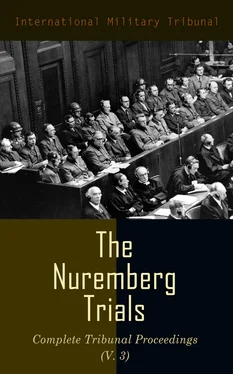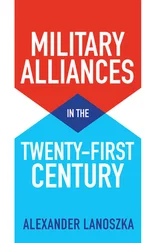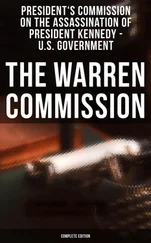During the spring and summer of 1938 the Luftwaffe was also engaged in planning in connection with the forthcoming Case Green and the further expansion of the Reich.
I now offer in evidence Document R-150, as United States Exhibit 82. This is a top-secret document dated 2 June 1938, issued by Air Group Command 3, and entitled “Plan Study 1938, Instruction for Deployment and Combat, ‘Case Red.’ ”
“Case Red” is the code name for action against the Western Powers if need be. Twenty-eight copies of this document were made, of which this is number 16. This is another staff plan, this time for mobilization and employment of the Luftwaffe in the event of war with France. It is given significance by the considerable progress by this date of the planning for the attack on Czechoslovakia.
I quote from the second paragraph on Page 3 of the English translation, referring to the various possibilities under which war with France may occur. You will note that they are all predicated on the assumption of a German-Czech conflict.
“France will either (a) interfere in the struggle between the Reich and Czechoslovakia in the course of Case Green, or (b) start hostilities simultaneously with Czechoslovakia. (c) It is possible but not likely that France will begin the fight while Czechoslovakia still remains aloof.”
And then, reading down lower on the page under the heading “Intention”:
“Regardless of whether France enters the war as a result of Case Green or whether she makes the opening move of the war simultaneously with Czechoslovakia, in any case the mass of the German offensive formations will, in conjunction with the Army, first deliver the decisive blow against Czechoslovakia.”
By mid-summer direct and detailed planning for Case Green was being carried out by the Luftwaffe. In early August, at the direction of the Luftwaffe General Staff, the German Air Attaché in Prague reconnoitered the Freudenthal area of Czechoslovakia south of Upper Silesia for suitable landing grounds.
I offer in evidence Document 1536-PS as Exhibit USA-83, a report of the Luftwaffe General Staff, Intelligence Division, dated 12 August 1938. This was a top-secret document for general officers only, of which only two copies were made.
Attached as an enclosure was the report of Major Moericke, the German Attaché in Prague, dated 4 August 1938. I quote the first four paragraphs of the enclosure:
“I was ordered by the General Staff of the Air Force to reconnoiter the land in the region Freudenthal-Freihermersdorf . . .”
THE PRESIDENT: Page 3 of the document?
MR. ALDERMAN: Yes. “. . . for landing possibilities.
“For this purpose I obtained private lodgings in Freudenthal with the manufacturer Macholdt, through one of my trusted men in Prague.
“I had specifically ordered this man to give no details about me to Macholdt, particularly about my official position.
“I used my official car (Dienst Pkw) for the journey to Freudenthal taking precautions against being observed.”
By 25 August the imminence of the attack on Czechoslovakia compelled the issuance by the Luftwaffe of a detailed intelligence memorandum, entitled “Extended Case Green”; in other words, an estimate of possible action by the Western Powers during the attack on Czechoslovakia.
I now offer this document in evidence, Number 375-PS as Exhibit USA-84. This is a top-secret memorandum of the Intelligence Section of the Luftwaffe, General Staff, dated Berlin, 25 August 1938. Based on the assumption that Great Britain and France would declare war on Germany during Case Green, this study contains an estimate of the strategy and air strength of the Western Powers as of 1 October 1938, the target date for Case Green. I quote the first two sentences of the document. That is under the heading “Initial Political Situation”:
“The basic assumption is that France will declare war during the Case Green. It is presumed that France will decide upon war only if active military assistance by Great Britain is definitely assured.”
Now, knowledge of the pending or impending action against Czechoslovakia was not confined to a close circle of high officials of the Reich and the Nazi Party. During the summer Germany’s allies, Italy and Hungary, were apprised by one means or another of the plans of the Nazi conspirators. I offer in evidence Document 2800-PS as Exhibit USA-85. This is a captured document from the German Foreign Office files, a confidential memorandum of a conversation with the Italian Ambassador Attolico, in Berlin on 18 July 1938. At the bottom is a handwritten note headed “For the Reichsminister only”, and the Reichsminister was the Defendant Ribbentrop. I now read this note. I read from the note the third and fourth paragraphs:
“Attolico added that we had made it unmistakably clear to the Italians what our intentions are regarding Czechoslovakia. He also knew the appointed time well enough so that he could take perhaps a 2 months’ holiday now which he could not do later on.
“Giving an idea of the attitude of other governments, Attolico mentioned that the Romanian Government had refused to grant application for leave to its Berlin Minister.”
THE PRESIDENT: Would this be a convenient time to break off for 10 minutes?
MR. ALDERMAN: Yes, Sir.
MR. ALDERMAN: May it please the Tribunal, a month later Mussolini sent a message to Berlin asking that he be told the date on which Case Green would take place. I offer in evidence Document Number 2791-PS as Exhibit USA-86, a German Foreign Office note on a conversation with Ambassador Attolico. This note is signed “R” for Ribbentrop and dated 23 August 1938. I now read two paragraphs from this memorandum:
“On the voyage of the Patria Ambassador Attolico explained to me that he had instructions to request the notification of a contemplated time for German action against Czechoslovakia from the German Government.
“In case the Czechs should again cause a provocation against Germany, Germany would march. This would be tomorrow, in 6 months, or perhaps in a year. However, I could promise him that the German Government, in case of an increasing gravity of the situation or as soon as the Führer made his decision, would notify the Italian Chief of Government as rapidly as possible. In any case, the Italian Government will be the first one who will receive such a notification.”
THE PRESIDENT: You did not tell us what the initial was, did you?
MR. ALDERMAN: The initial “R” for Ribbentrop, and the date 23 August 1938.
Four days later Attolico again asked to be notified of the date of the pending attack. I offer Document Number 2792-PS as Exhibit USA-87—another German Foreign Office memorandum, and from that document I read three paragraphs under the heading “R. M. 251.”
“Ambassador Attolico paid me a visit today at 12 o’clock to communicate the following:
“He had received another written instruction from Mussolini asking that Germany communicate in time the probable date of action against Czechoslovakia. Mussolini asked for such notification, as Mr. Attolico assured me, in order ‘to be able to take in due time the necessary measures on the French frontier.’ Berlin, 27 August 1938; ‘R’ ”—for Ribbentrop, and then:
“N. B. I replied to Ambassador Attolico, just as on his former démarche, that I could not impart any date to him; that, however, in any case Mussolini would be the first one to be informed of any decision. Berlin, 2 September 1938.”
Hungary, which borders Czechoslovakia to the southeast, was from the first considered to be a possible participant in Case Green. You will recall that in early March 1938 Defendants Keitel and Ribbentrop had exchanged letters on the question of bringing Hungary into the Nazi plan. At that time the decision was in the negative, but by mid-August 1938 the Nazi conspirators were attempting to persuade Hungary to join in the attack.
Читать дальше












